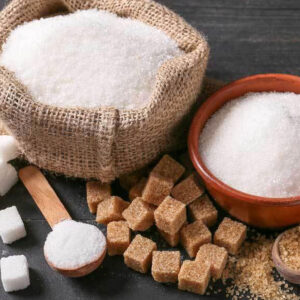Many recipes specify either beet sugar vs cane sugar, depending on the intended outcome.
Many recipes specify either beet sugar vs cane sugar, depending on the intended outcome.
Blog Article
Discover the Uses and Perks of Beet Sugar Vs Cane Sugar in Your Daily Diet
Checking out the distinct high qualities of beet and cane sugar reveals greater than simply their sweetening capabilities; it highlights their one-of-a-kind influence on health and cookeries. Beet sugar, recognized for its subtle taste, is typically preferred in delicate treats, whereas cane sugar, with its hint of molasses, adds splendor to robust meals. Each kind holds its very own nutritional profile and glycemic effects, inviting a deeper understanding of their functions in a balanced diet and lasting consumption methods.
Beginning and Production Processes of Beet and Cane Sugar

The unique environments and soil types needed for expanding sugar beets and sugarcane add to distinctions in their growing practices and geographical circulation, affecting the economics and sustainability of their production. beet sugar vs cane sugar.
Nutritional Comparison Between Beet Sugar and Cane Sugar
Despite originating from different plants, beet sugar and cane sugar are nutritionally extremely comparable, both largely containing sucrose. Each provides about 4 calories per gram, equating to approximately 16 calories per tsp. Structurally, both sugars are made up of around 99.95% sucrose, with minimal amounts of other compounds like moisture and trace minerals, which do not substantially change their nutritional profiles.

Inevitably, when choosing in between beet sugar and redirected here cane sugar based upon nutritional content alone, both deal the same advantages and drawbacks as they are essentially types of the very same particle-- sucrose, providing quick power without various other nutrients.
Influence On Health: Glycemic Index and Caloric Material
Checking out additionally into the impacts of beet sugar and cane sugar on health, it is essential to consider their glycemic index and calorie material. The glycemic index (GI) of both beet and cane sugar is around 65, categorizing them as high-GI more tips here foods, which can create quick spikes in blood glucose degrees.
Each sort of sugar includes about 4 calories per gram, making their caloric web content matching. For those keeping an eye on caloric consumption, particularly when handling weight or metabolic health and wellness problems, recognizing this equivalence is additional resources crucial (beet sugar vs cane sugar). Excessive intake of any high-calorie, high-GI food can contribute to wellness problems such as obesity, heart illness, and insulin resistance.
Environmental and Economic Factors To Consider of Sugar Production
Beyond wellness impacts, the production of beet and cane sugar additionally raises considerable environmental and economic worries. Sugar beet farming has a tendency to need cooler environments and has a lower geographical impact contrasted to sugar cane, which thrives in exotic areas.
In addition, using pesticides and plant foods in both beet and cane sugar growing can result in soil degradation and contamination, additional impacting biodiversity and regional water bodies (beet sugar vs cane sugar). The option between growing sugar beet or cane often pivots on neighborhood ecological conditions and financial variables, making the sustainability of sugar manufacturing a complicated issue
Culinary Applications and Taste Differences
While the ecological and economic facets of sugar manufacturing are certainly substantial, the option between beet and cane sugar additionally influences cooking applications and taste profiles. Beet sugar, derived from the sugar beet plant, is recognized for its incredibly neutral taste.
Walking cane sugar, drawn out from sugarcane, frequently retains molasses traces, which present an unique richness and deepness. This small molasses taste enhances the intricacy of baked goods, sauces, and sauces. It is especially preferred in items where a sugar touch is preferred, such as in brownies or gingerbread. The mild variation in wetness web content between beet and cane sugar can impact the appearance and uniformity of dishes, making cane sugar a recommended selection for specific recipes that benefit from its special properties.

Conclusion
Finally, both beet and cane sugar have unique origins and manufacturing procedures, using comparable nutritional profiles with minor distinctions in sodium material and flavor. While their effect on health and wellness, especially regarding glycemic index and calories, is comparable, the selection between them usually comes down to environmental, financial aspects, and specific culinary demands. Comprehending these elements can guide customers in making notified decisions that straighten with their health goals and taste preferences.
Report this page